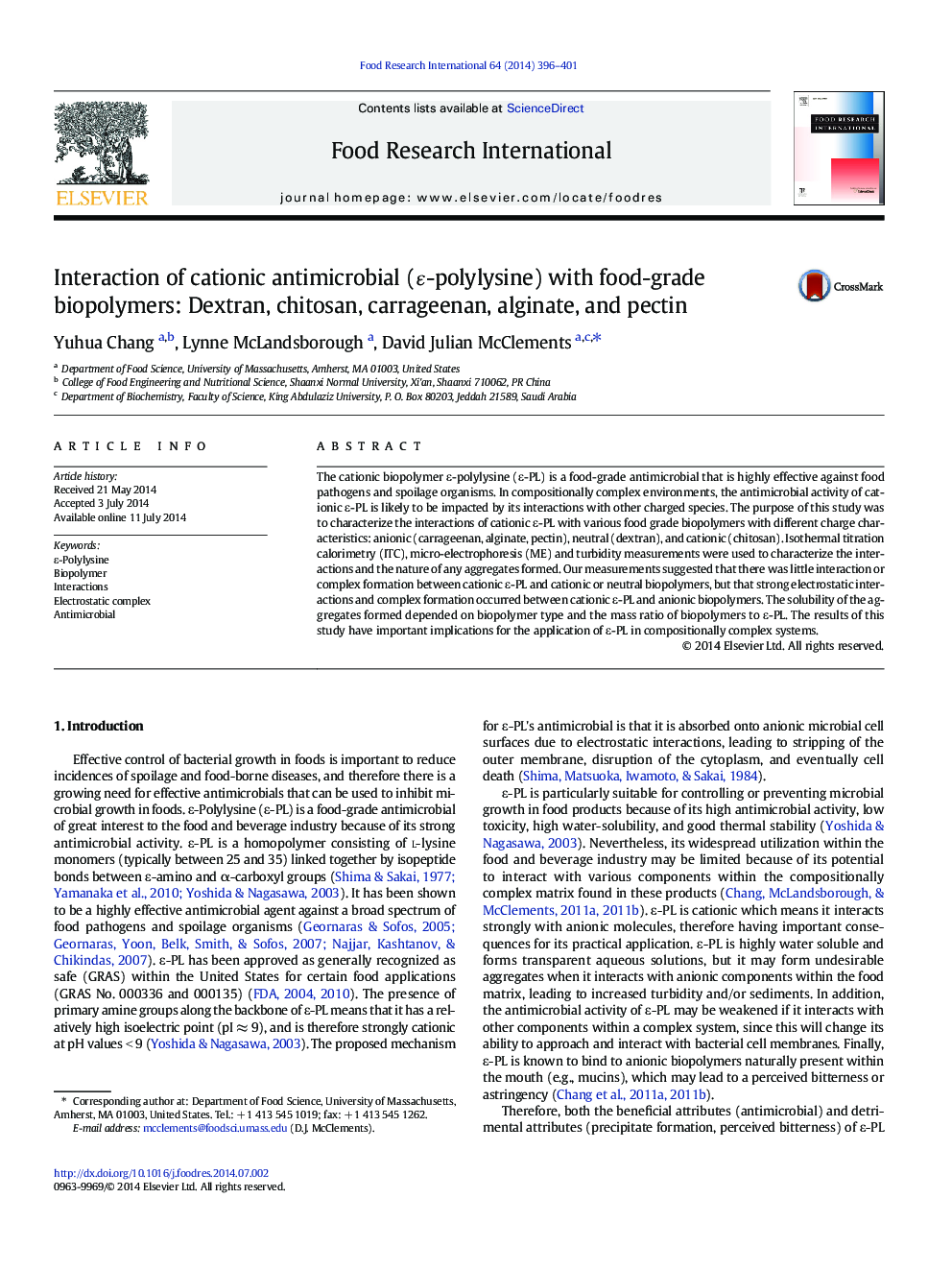| Article ID | Journal | Published Year | Pages | File Type |
|---|---|---|---|---|
| 6396641 | Food Research International | 2014 | 6 Pages |
â¢Interaction of cationic ε-polylysine with different biopolymers was characterized.â¢Little interaction occurred between ε-polylysine and neutral biopolymers.â¢Little interaction occurred between ε-polylysine and cationic biopolymers.â¢Strong interactions occurred between ε-polylysine and anionic biopolymers.â¢Interactions depended on biopolymer types and their mass ratio to ε-polylysine.
The cationic biopolymer ε-polylysine (ε-PL) is a food-grade antimicrobial that is highly effective against food pathogens and spoilage organisms. In compositionally complex environments, the antimicrobial activity of cationic ε-PL is likely to be impacted by its interactions with other charged species. The purpose of this study was to characterize the interactions of cationic ε-PL with various food grade biopolymers with different charge characteristics: anionic (carrageenan, alginate, pectin), neutral (dextran), and cationic (chitosan). Isothermal titration calorimetry (ITC), micro-electrophoresis (ME) and turbidity measurements were used to characterize the interactions and the nature of any aggregates formed. Our measurements suggested that there was little interaction or complex formation between cationic ε-PL and cationic or neutral biopolymers, but that strong electrostatic interactions and complex formation occurred between cationic ε-PL and anionic biopolymers. The solubility of the aggregates formed depended on biopolymer type and the mass ratio of biopolymers to ε-PL. The results of this study have important implications for the application of ε-PL in compositionally complex systems.
